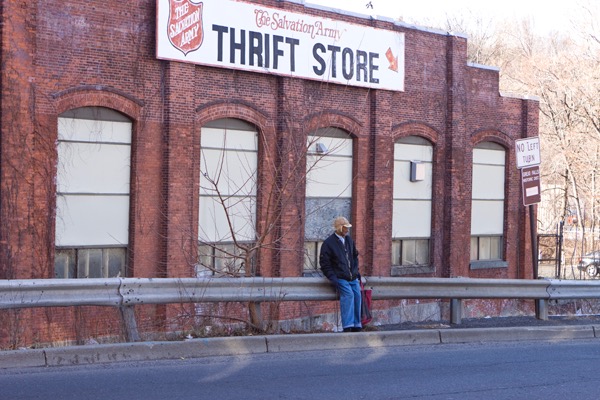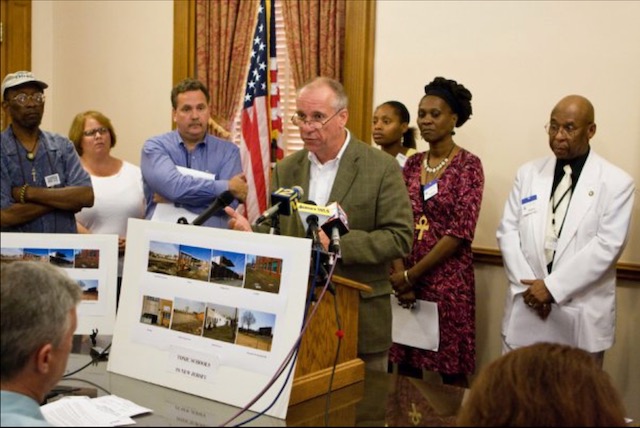Will Upcoming DEP Environmental Justice Permit Review Rules Be As Bad As Climate PACT Rules?
EJ activists have made absolutely no clear regulatory and technical demands
Wild-goose chase: : a complicated or lengthy and usually fruitless pursuit or search
Wild-goose chase. I haven’t heard that phrase used in a long while.
I hate to see good people get duped and manipulated, which is why I wrote this;
But Commissioner LaTourette’s Administrative Order was just a placeholder for the main event.
The Murphy DEP will soon propose the long delayed and desperately needed “environmental justice” permit review regulations.
I have written several times that the law that authorized those regulations is seriously flawed and will not work. (e.g. see this and this and this).
I’ve focused on how that legislation completely ignored the specific technical requirements of current laws, standards, and DEP permit regulations and instead enacted vague and unenforceable novel feel good slogans that can not be implemented to meet the asserted goals of the legislation (e.g. see this)
Nonetheless, the environmental justice community (local activists and environmental groups) seem to have gone radio silent on the issues and have abandoned traditional activism. Instead they are relying completely on quiet closed door DEP negotiations on the development of these regulations and praising – not pressuring – Gov. Murphy.
Climate activists did the same thing by participating for 2 years in a sham “Stakeholder” process and praising the Governor, instead of publicly pressuring the Murphy administration. And predictably they got screwed.
So, I am now predicting that the EJAC and EJ community – with some of the same Murphy climate cheerleaders in leadership positions – will get screwed just as badly as the climate community just did and for the same reasons.
We will soon see.
The EJ activists and radicals having been marginalized, that inside baseball effort is being managed through the DEP’s “Environmental Justice Advisory Council” (EJAC).
The DEP’s Environmental Justice Advisory Council is staffed by Joanne Held, the former head of DEP’s Hazardous Air pollution program. Surely, she knows where the skeletons are buried. Is she talking? Or is she still loyal to DEP? (For exactly what Ms. Held knows, see:
Ask yourself: Why would a federal Judge – certainly no radical EJ activist – in a legal opinion, be a harsher critic of DEP than the EJAC, environmental groups, and so called climate and EJ activists?
A review of the most recent posted September 15, 2021 meeting notes of the EJAC with respect to the pending EJ regulations states the following:
Ad Hoc Rules Committee (Joann Held)
The committee is preparing some recommendations regarding concerns with the methodology of the rule and how stressors are weighed. The concept of the combined stressor totals is not clear to the committee. IT demo coming soon to explain overburdened communities map, the stressors within each community and accompanying methodology. Focus on compelling public interest, cumulative impacts, odors & impervious surfaces. Expectation that EJ rule will be proposed in the NJ Register this fall with a public comment period of 60 days and then adoption one year later.
Let’s repeat that: “The concept of the combined stressor totals is not clear to the committee”.
Well, it’s not clear to me either. And this lack of clarity about a basic methodology and core issue is after YEARS of rule development and inside negotiations with DEP.
After 2 years of negotiating rule development and just weeks before DEP is scheduled to propose a regulation, the EJAC is just getting around to “preparing some recommendations regarding concerns with the methodology of the rule and how stressors are weighed.”
What? Are you kidding me?
The concept of stressor is not some tangential 12th hour technical issue. It is the core of the EJ Act.
Here is that novel and vague legislative standard: DEP is required to deny a permit for certain NEW facilities, based on review of an “environmental justice statement”, but only when DEP can issue this finding (with a huge public interest loophole):
a finding that approval of the permit, as proposed, would, together with other environmental or public health stressors affecting the overburdened community, cause or contribute to adverse cumulative environmental or public health stressors in the overburdened community that are higher than those borne by other communities within the State, county, or other geographic unit of analysis as determined by the department pursuant to rule, regulation, or guidance adopted or issued pursuant to section 5 of this act, except that where the department determines that a new facility will serve a compelling public interest in the community where it is to be located, the department may grant a permit that imposes conditions on the construction and operation of the facility to protect public health.
(keep in mind that “new” facilities don’t yet exist, so they are not the ones creating the pollution that is overburdening the community and causing “stressors”. Existing facilities and polluters are and they are the ones that must reduce their pollution, but they are not subject to the same standard.)
Wild-goose chase, indeed.
I think the stressor methodology is a wild-goose chase. I think the public interest loophole is a wild goose chase.
The legislation created “narrative standards“. DEP has rarely, if ever, adopted and enforced current narrative standards in the clean water program. DEP has rarely, if ever, enforced the “cause or contribute” narrative standards in the clean water program. DEP has rarely, if ever, adopted and enforced “cumulative impact” standards in the coastal zone permit program.
On top of all that, the law requires that a broad range of human health effects, called “stressors”, form the basis of DEP permit decisions. DEP already fails to enforce a specific numeric cancer risk level in NJ Safe Drink Water Act, a standard that is based on decades of risk assessment, toxicological science, and regulatory practice.
And we also know that DEP has abused the current “public interest” standards in various laws (most recently illustrated by how that term was used to broker the “compromise” (i.e. sellout) in the Christie DEP’s category one waters buffer rollback).
DEP will never be able to adopt standards and enforce these novel concepts that are not adequately grounded in science, laws, and regulations and the current DEP permit programs.
We know that from experience, it’s how DEP rolls, see:
- DEP Guts Science on Cumulative Cancer Risks in Paterson NJ
- DEP Suppressing Study That Shows Breathing Air in Paterson is Hazardous to Your Health
Instead, the EJAC needs to focus on how EJ objectives can be incorporated and enforced in existing DEP permit regulations, Technical Manuals, Guidance documents, science, regulatory standards, and permit review methodologies – and hold DEP accountable to make these changes! Or else, nothing will change.
But instead of holding DEP accountable to revise their own programs to address EJ concerns, in reviewing the EJAC webpage, I could find no specific policy or clear set of technical demands by the EJAC for critical current DEP regulatory clean air and EJ issues, including such basics as:
- EJ community exposures to cancer causing hazardous air pollutants
- DEP lack of regulation of cumulative risk & impacts to multiple exposures and multiple pollution sources
- DEP’s failure to update the cancer risk screening, risk assessment, & pollution dispersions technical requirements
- DEP’s failure to enforce the NJ Air Pollution Control Act’s “advances in the art” standard
- DEP’ failure to require community level ambient air quality monitoring
- DEP’s long delayed and upcoming “environmental justice’ permit review regulation
- DEP’s current Climate PACT GHG rule proposal
No doubt, DEP will spin their EJ rule proposal and the EJ activists will be hard pressed to challenge that spin, because they have made absolutely no clear technical demands against which to evaluate it.
For example, the key DEP technical and regulatory standards and grounds for issuing air pollution permits include:
- “advances in the art of pollution control” – also known as “state of the art” or SOTA
- risk assessment, including “acceptable risk” and how DEP considers cumulative impacts and disproportionate burdens
- air quality modeling
- emissions monitoring (at the stack)
- ambient air quality monitoring (at the fence line and in the community)
- mitigation and offsets
- a host of legal thresholds & standards for what facilities, processes, chemicals, emissions (potential/actual/fugitive/lifecycle), ambient air quality, and the kind of impacts that are regulated
Thus, while on their Wild-Goose Chase, the EJAC is ignoring what can work and is thereby destined to fail and let DEP and polluters completely off the hook.
And I don’t think that is an accident – it’s been the cynical goal of policymakers from day one. Slogans over policy.
[End Note: for those who don’t know me and/or assume this criticism comes from a right wing racist troll, let me remind (State House press conference in 2008, with Camden EJ activists, demanding that Gov. Corzine stop building schools on toxic waste sites in poor and black communities):



Pingback: WolfeNotes.com » Murphy DEP Denial Of Climate Petition Exposes The Sham Of Murphy’s Climate Rhetoric
Pingback: WolfeNotes.com » Environmental Justice Advocates Call On Gov. Murphy To Kill Proposed Fossil Power Plant In Newark